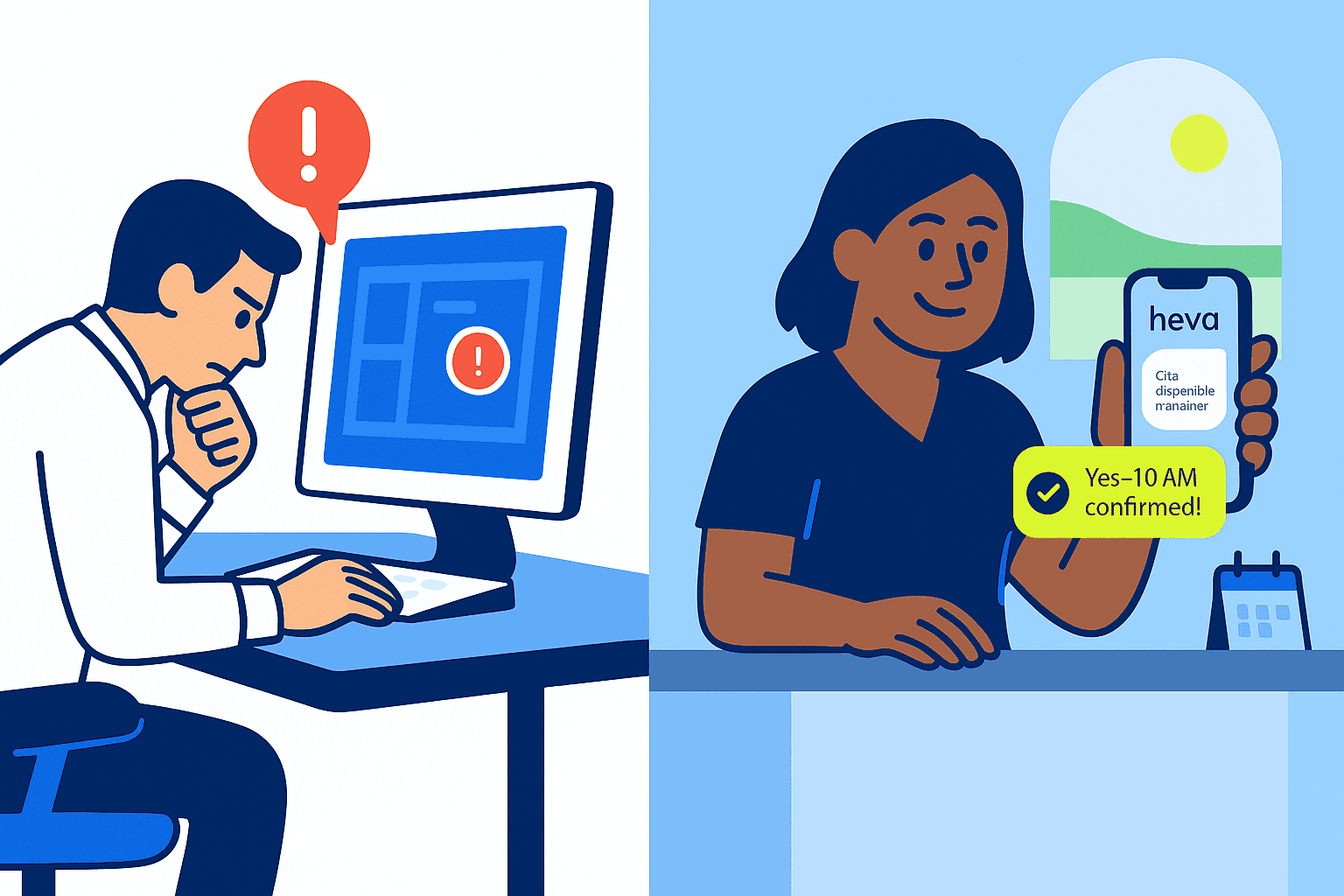At Apple, 99.9% polished still felt unfinished. Perfect was the baseline. At heva, a scrappy half-built chat saved a clinic days of back-and-forth. That contrast rewired how we build.
The Perfection Culture
We came up through cultures at Apple and Google where a single mis-aligned pixel could stall a launch. Perfection was not a milestone; it was table stakes. So when we started prototyping heva, our reflex was to chase the same immaculate bar.
The Reality Check
Then we met Dr. Abreu in Santo Domingo. His team spent evenings volleying WhatsApp messages just to lock in one appointment with a patient. They never asked for a beautiful UI; they begged for relief from this scheduling loop.
The Good Enough Solution
We shipped a good-enough chat interface—basic, bilingual, a little rough around the edges. Within six minutes a patient answered her questions and booked a slot—something that had taken her two weeks before. That single data point was worth more than a month of polish.
The New Philosophy
Perfection still guides us, but urgency sets the order of operations. Great comes after good enough first earns its place.
Key Lessons for Healthcare Technology
- Listen to real problems: Focus on what providers actually need, not what looks perfect
- Ship early and iterate: A working solution beats a perfect one that never ships
- Measure real impact: Time saved and problems solved matter more than pixel-perfect design
- Balance quality with speed: Good enough that works is better than perfect that doesn't
This approach has transformed how we think about healthcare technology and patient care solutions. Sometimes the best innovation isn't the most polished—it's the one that solves the real problem, right now.
